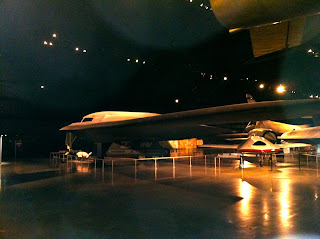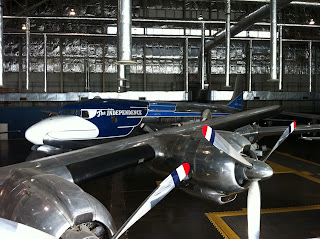In addition to exploring cities I've never been before, part of me also enjoys returning to places I haven't visited since childhood, places that always filled me with such joy and fascination, places that inspired me in ways I haven't felt in a good many years. One of those such places is the Air Force Museum near Dayton, Ohio (http://www.nationalmuseum.af.mil/).
Currently renamed to the National Museum of the US Air Force, visits were always turned into a big deal with my family. It was only two hours away from home, but we would always head that direction the night before, to stay at the Holiday Inn Holidome in Springfield, Ohio, to play in the indoor pool and playground. That way, we'd be fresh in the morning to get to the museum just as it opened.
Having tripled their interior exhibition space since my first visit in the mid 1980s, the museum currently displays over 360 aerospace vehicles and missiles on over 17 acres, and is the largest museum of its kind in the world. It is located at the Wright-Patterson Air Force Base, with some of the display hangers inside the base's secure areas. Admission is completely free, and the museum is staffed by volunteers, most of which served in the Air Force and even flew some of the planes on display.
The collection spans the history of flight, from a replica of a Wright Brothers' wind tunnel flier to spy planes and satellites that have just been declassified. All my favorites as a child are still there as I'd hoped: the "Shark Plane,"
my first exposure to a written curse word,
the SR-71 Blackbird,
and the B-36J, a six-propeller and four-turbojet engine plane so large it just barely fit inside the original museum hanger, the building was built around it.
The collection also includes some very famous pieces of history, like the B-29 "Bockscar," the plane that dropped the atomic bomb on Nagasaki,
and the B-2 Stealth Bomber.
In addition, the museum displays several Presidential planes, "Air Force One," after each was retired and replaced. Most notable among these is the newest acquisition, the plane that carried Kennedy's body back from Dallas, on which LBJ was sworn in.
Slowly walking through these hangers, I felt just as I did as a child. The excitement surrounding all these different planes, the irrational fear that the landing gear would give out and I'd be crushed if I walked underneath one. The exhibits have changed and been rearranged since I was young, and the museum feels much less cramped due to the added space, but it still has that nostalgic sense about it. Being exposed to this many aircraft at a young age is part of why I still get excited every time I step onto a plane today.











